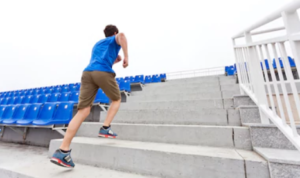Even those on the highest end of the Spectrum are more likely to be sedentary when compared to the general population. Let’s change this!
I didn’t get my clinical diagnosis of Autism Spectrum Disorder until middle age. But Shea Belsky, 25, received his ASD diagnosis at age two.
Since most people in the general population are not fitness enthusiasts, it’s not surprising that most autistic adults (even Level 1) do not engage in consistent, structured exercise.
In fact, de-conditioning is more common in even self-sufficient, employed autistic adults than in the general neurotypical population.
But that doesn’t mean that sedentary adults on the Spectrum can’t gain immense benefits from regular workouts.
I began lifting weights at age 15 in my high school’s weight room: a Universal weight stack contraption.
In college I regularly used the extensive weight room for students. I’ve never stopped lifting weights. I’ve also been doing aerobic exercise since early high school.
Shea is a hiker, runner and skier. He had a big advantage growing up: active parents.
He explains, “I was brought up in an active household (skiing/hiking/walking), so I quite honestly would have grown up in an active lifestyle with or without a formal diagnosis.
“I’m in the middle of training for a half marathon, so I currently try to run at least three days a week.
“Sometimes I’ll run more if I have time and can arrange my schedule in such a way where it works.
“There’s the concept of a ‘runner’s high’ which I absolutely subscribe to: when I’m running and not really focusing on any one thing in particular.
“I just feel really good when I’m running, whether it’s long or fast, alone or with other people.
“When my mind can move really fast or get stressed out about something, running lets me ‘turn my brain off’ and cool down.
“Funnily enough, I can sometimes work through some problems while running that might take longer if I was sitting still.
“I regularly run with my girlfriend and with a running club (Midnight Runners) on a frequent basis. It’s also a social opportunity for sure!”
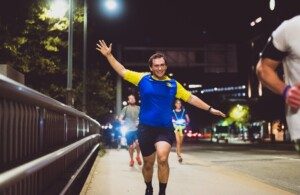
Shea Belsky running with the Midnight Runners. Credit: Brian Wilson (Midnight Runners)
Autistic People Need to Get Active!
If you’re autistic and don’t regularly exercise (and no, housework or a lot of walking on the job don’t count), you should seriously consider making structured exercise a part of your life – especially if you have challenges with your self-confidence or depression.
Structured exercise (e.g., speed walking, hill walking or dashing, staircase dashing, cycling, cardio machine workouts, exercising to videos, and performing resistance with tension bands, kettlebells, weight machines and dumbbells and barbells) is something you can do without the burden of socializing or feeling you must try to act neurotypical.
You can do all of the aforementioned activities in the privacy of your home. Fancy, bulky, expensive equipment is not necessary for many cardiovascular and strength training activities.
For instance, if all you have are several pairs of dumbbells, a fitness ball and an exercise stepping box, you can do endless workouts that hit every muscle group.
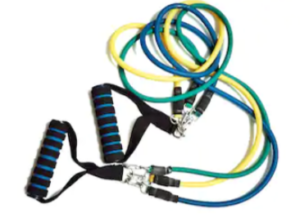
Tension bands can deliver a home workout that hits all the major muscle groups.
“Speaking for myself as an autistic athlete, it’s frustrating that more autistic people don’t (or more likely can’t) take advantage of opportunities to be more physically active,” says Shea.
“I fully understand that this simple ‘be more active’ mentality is a lot more complicated in reality.
“The reasons can be varied in terms of why some autistic folks aren’t able to be active.
“Gyms can be a nightmare of sensory and cognitive overload because of loud music, smells, people everywhere, bright lighting, unspoken rules and other things.
“Sports like running, biking or skiing are optionally social — you can choose to do them either by yourself or with other people.
“A lot of places are trying to make progress on sensory friendly environments for autistic and neurodiverse athletes to be active in a way that works for them: werockthespectrumwellesley.com and inclusivefitness.com.
Bright lights don’t bother me, but loud gym noise definitely does. I solve this problem easily with custom-made earplugs. A cheaper alternative is noise-reducing headphones.
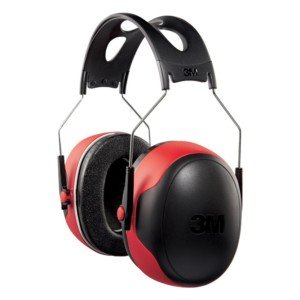
Noise reducing headphones are highly effective at reducing ambient volume.
Autism and Coordination
If an autistic child or adult lacks coordination, this should never be an obstacle to a fitness regimen.
In fact, strength training – simply pushing and pulling against resistance – improves neuromuscular coordination. Aerobic exercise, too, enhances coordination.
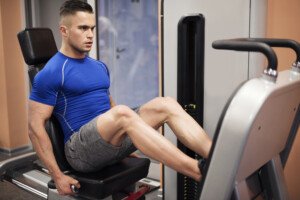
The leg press. Freepik.comgpointstudio
“I’m an expert skier and have been skiing my entire life,” says Shea.
“My middle name is Hunter after the mountain where my parents met!
“For me, the muscle memory behind skiing is second nature at this point in my life.
“It’s not something I really consciously think about in terms of the body movements.
“When I was growing up and learning, I was a bit clumsy and all over the place when figuring things out.
“But that happens with everyone who is skiing for the first time. Very few people put on their skis and shoot down the hill.
“It is a learning curve for nearly everyone, unless you are an expert ice/roller skater. Those sports use many of the same mechanics and terms as skiing does, but those are the outliers.
“Skiing doesn’t just require good control over your skis, but also peripheral awareness of who and what are around you.
“You have to make sure you don’t go off the trail or get hit by someone who’s out of control.
“Mountains do a good job of encouraging skier safety and awareness, but the final responsibility always falls with the athlete.
“This sensory awareness is true in many other sports as well (running, biking, hiking), but is complicated in skiing by so many environmental and peripheral factors that are harder to control than with other sports.”
Getting Started with Exercise when You’re Autistic
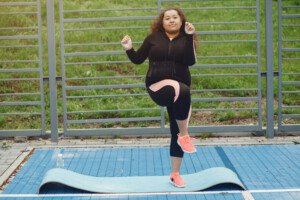
Freepik.com, prostooleh
Here are articles that cover some basics in great detail.
• Strength Training for Beginners
• The Barbell Squat and Beginners
• Tone the Entire Body with the Deadlift
• Walking Dumbbell Lunges for Both Men and Women
 Shea Belsky is an autistic self-advocate and the product of countless educators and supporters over the years. Mentra puts recruiters in front of candidates rather than forcing them to navigate through the challenging process of finding employment. How? Through humanistic AI and community-driven design.
Shea Belsky is an autistic self-advocate and the product of countless educators and supporters over the years. Mentra puts recruiters in front of candidates rather than forcing them to navigate through the challenging process of finding employment. How? Through humanistic AI and community-driven design.
 Lorra Garrick has been covering medical, fitness and cybersecurity topics for many years, having written thousands of articles for print magazines and websites, including as a ghostwriter. She’s also a former ACE-certified personal trainer. In spring 2022 she received a diagnosis of Level 1 Autism Spectrum Disorder.
Lorra Garrick has been covering medical, fitness and cybersecurity topics for many years, having written thousands of articles for print magazines and websites, including as a ghostwriter. She’s also a former ACE-certified personal trainer. In spring 2022 she received a diagnosis of Level 1 Autism Spectrum Disorder.
.

